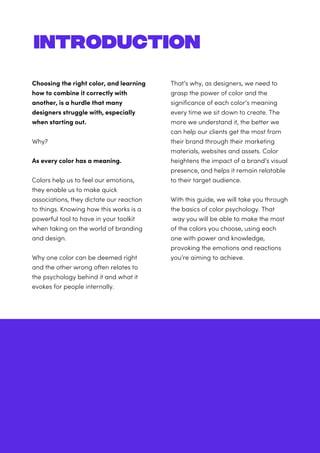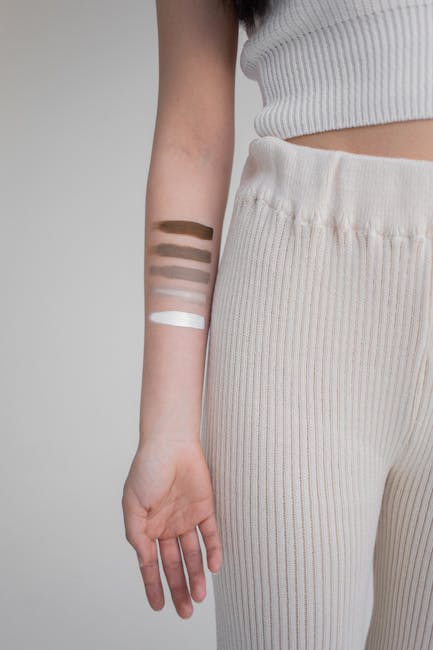
Color is more than just a visual feast for the eyes – it’s a powerful force that can make or break your logo design. From fiery reds to tranquil blues, the colors you choose can evoke a kaleidoscope of emotions in your customers. So buckle up, grab your color wheel, and get ready to embark on a chromatic journey through the wild world of logo design. Let’s paint the town red – or green, or purple, or whatever color tickles your fancy!
The Role of Color Psychology in Logo Design
Can you imagine what Coca-Cola’s logo would look like if it was a dull shade of gray? Or how McDonald’s golden arches would affect our appetite if they were painted a sickly green? Color psychology plays a crucial role in logo design, influencing consumer perceptions and emotions in ways that we may not even realize.
When creating a logo, designers carefully select colors that convey specific messages and elicit certain reactions from target audiences. Here are some ways in which color psychology impacts logo design:
- Red: Often associated with passion, energy, and excitement, red is a popular choice for logos aimed at attracting attention and stimulating the senses.
- Blue: Symbolizing trust, reliability, and professionalism, blue is frequently used in logos for financial institutions, healthcare providers, and tech companies.
- Yellow: Radiating optimism, happiness, and warmth, yellow is commonly found in logos for brands targeting a youthful and energetic demographic.
Ultimately, the colors chosen for a logo can make or break a brand’s image. So next time you see a logo that catches your eye, take a moment to appreciate the thought and strategy that went into selecting its colors!
Creating Brand Recognition Through Strategic Color Choices
When it comes to creating brand recognition, color choices play a huge role in how your brand is perceived. Strategic color choices can make your brand stand out from the competition and leave a lasting impression on consumers.
Here are some tips to help you choose the right colors for your brand:
- Know your target audience: Consider the demographics of your target audience and choose colors that will resonate with them. For example, if your target audience is young and trendy, bright and bold colors might be the way to go.
- Consider color psychology: Different colors evoke different emotions and can influence how consumers perceive your brand. For example, blue is often associated with trust and reliability, while red can create a sense of urgency.
- Be consistent: Once you’ve chosen your brand colors, make sure to use them consistently across all of your marketing materials. This will help create a cohesive and recognizable brand image.
Remember, choosing the right colors for your brand is no small task, but with a little thought and creativity, you can create a color scheme that will help your brand stand out and make a lasting impression on consumers.

Using Color to Convey Brand Identity and Values
Color is powerful. It can make us feel all the feels and can even stimulate our appetites. (Who knew a simple splash of red could make us crave a cheesy pizza?) When it comes to branding, color is no exception. It’s like your brand’s very own personal mood ring. So, let’s dive into how you can use color to convey your brand’s identity and values in a way that will have your customers saying, “Oh wow, that’s so on brand!”
First things first, you need to choose your brand’s color palette wisely. Here are some dos and don’ts to keep in mind:
- Do: Pick colors that align with your brand’s personality and values.
- Don’t: Choose colors that make your eyes hurt. No one wants a headache from looking at your brand.
Next, think about the emotions you want your brand to evoke. For example, if you want to convey trustworthiness and reliability, blues and greens are your best friends. But if you want to show off your playful side, maybe throw in some yellows and oranges for good measure. Just remember, you don’t want your brand to be an emotional rollercoaster. Consistency is key, people!
And finally, don’t be afraid to get a little creative with it. Think outside the box (or the color wheel, if you will). Maybe your brand’s “signature color” is actually a wild combo of neon pink and electric blue. Hey, if it works for you and your brand, go for it! After all, when it comes to colors and branding, the sky’s the limit.
.jpg)
Influencing Customer Behavior and Perception with Color
When it comes to , you have to think beyond just red for sales and blue for trust. The psychology of color runs deep, my friends, and it’s time to dive in headfirst!
First things first, let’s talk about the power of blue. This color is known for inspiring trust and reliability, but did you know it can also curb appetite? So, if you’re running a buffet restaurant, you might want to steer clear of too much blue décor. Paint those walls in a shade of hunger-inducing green instead!
Next up, let’s chat about red. This fiery hue is all about passion and urgency, making it the perfect choice for a clearance sale sign or a limited-time offer banner. Just be careful not to overdo it, unless you want your customers feeling like they’re trapped in a never-ending cycle of impulse buying!
And let’s not forget about purple – the color of royalty and luxury. If you want to elevate your brand and give off an air of sophistication, sprinkle some purple accents throughout your store or website. It might just be the royal touch you need to make those sales skyrocket!

Utilizing Color to Elicit Specific Emotions from Customers
When it comes to , it’s all about understanding the psychology behind different hues. Forget about boring old black and white — we’re talking about a rainbow of emotions just waiting to be tapped into!
Think about it: when you see red, what’s the first thing that comes to mind? Passion, excitement, danger…or maybe just a really good salsa. Red is all about grabbing attention and making a statement, so if you want to spark some energy in your customers, this is the color to go for.
On the opposite end of the spectrum, we have blue, the color of calm and tranquility. Picture a serene ocean or a clear sky — that’s the feeling you’re aiming for when you use blue in your branding. Want your customers to trust you? Blue is your go-to hue.
And let’s not forget yellow, the color of happiness and sunshine. If you want to evoke feelings of optimism and joy in your customers, throw some yellow into the mix. Just maybe skip the neon shades…we don’t want to blind anyone with enthusiasm!
Establishing Trust and Credibility Through Thoughtful Color Selection
When it comes to choosing the right colors for your brand or design, it’s important to consider how they can help establish trust and credibility. Thoughtful color selection can make all the difference in how your audience perceives your brand. Here are a few tips to help you make the best color choices:
1. **Warm Colors vs. Cool Colors:** Warm colors like reds, yellows, and oranges can evoke feelings of energy and excitement, while cool colors like blues, greens, and purples are often associated with calmness and stability. Consider the emotional response you want to evoke from your audience when choosing between warm and cool colors.
2. **Contrast is Key:** Using contrasting colors can make your design more visually appealing and help important elements stand out. Whether it’s a bold color against a neutral background or complementary colors that enhance each other, don’t be afraid to play with contrasting colors to make your design pop.
3. **Color Psychology:** Different colors can have different psychological effects on people. For example, blue is often associated with trust and reliability, while green can evoke feelings of growth and harmony. Consider the message you want to convey and choose colors that align with those emotions.
Maximizing the Impact of Your Logo Through Effective Color Schemes
When it comes to creating a logo that truly shines, color schemes play a crucial role. You want your logo to stand out from the crowd, not blend in like a chameleon at a rainbow convention. So let’s dive into some tips on how to maximize the impact of your logo through effective color choices.
First off, consider the psychology behind different colors. Red: Bold, passionate, and full of energy. Blue: Trustworthy, calm, and reliable. Yellow: Cheerful, optimistic, and sunny. Depending on the message you want your logo to convey, choose colors that will resonate with your target audience.
Next, think about contrast. Contrast is like the salt and pepper of design: it adds flavor and makes things pop. Pairing light colors with dark colors or warm colors with cool colors can create visual interest and help your logo stand out in a sea of mediocrity.
Lastly, don’t be afraid to think outside the box. Your logo is the face of your brand, so why not make it as unique and memorable as possible? Experiment with unexpected color combinations, quirky palettes, and daring contrasts. Remember, in a world full of beige and boring, be a neon rainbow unicorn.
FAQs
Why is color important in logo design?
Well, imagine a world without color – bland, boring, and quite frankly, a snooze fest. Color is what catches our attention, stirs our emotions, and makes us crave that double chocolate fudge brownie. In logo design, color is the secret sauce that brings a brand to life and connects with customers on a deeper level.
How can different colors in a logo evoke specific emotions in customers?
Think of colors as the Robin to your Batman – they’re the sidekick that helps tell the story. For example, warm colors like red and orange can evoke feelings of excitement and passion, while cool colors like blue and green can bring a sense of calmness and trust. By choosing the right color palette, you can tap into your customers’ emotions and create a lasting impression.
Can using multiple colors in a logo be beneficial?
Absolutely! Just like a box of crayons, using multiple colors in a logo can add depth, complexity, and visual interest. It’s like creating a masterpiece on a canvas – each color adding its own unique flair to the overall design. Just remember to keep things balanced and harmonious, like a perfectly orchestrated symphony.
How important is it to consider cultural differences when choosing logo colors?
Ah, cultural differences – the spice of life! When it comes to logo design, it’s crucial to consider how colors can be interpreted differently across various cultures. For example, white might symbolize purity and innocence in one culture, but mourning and sadness in another. So, do your homework and make sure your logo colors are speaking the right language to your target audience.
Any tips for choosing the right colors for a logo?
When in doubt, stick to the classics – like a little black dress or a classic red lipstick. Consider your brand personality, target audience, and industry trends when choosing colors. And most importantly, trust your gut feeling – if a color gives you good vibes, chances are it will do the same for your customers. So go ahead, paint the town red (or blue, or yellow) with your logo design!
In conclusion: Go forth and color your world!
Thanks for diving into the colorful world of logo design with us. Remember, choosing the right colors for your logo can make all the difference in eliciting the right emotions from your customers. So, whether you’re feeling blue, seeing red, or feeling green with envy, let your logo do the talking! And remember, when in doubt, just add more rainbows!









